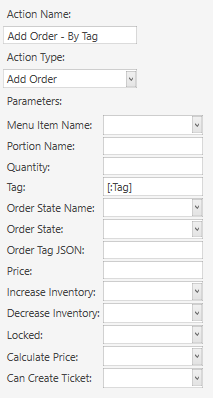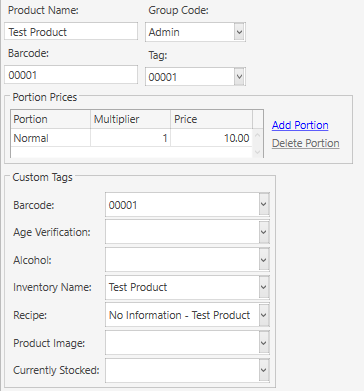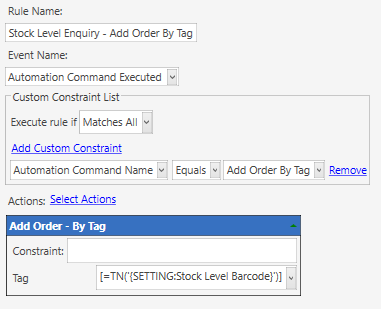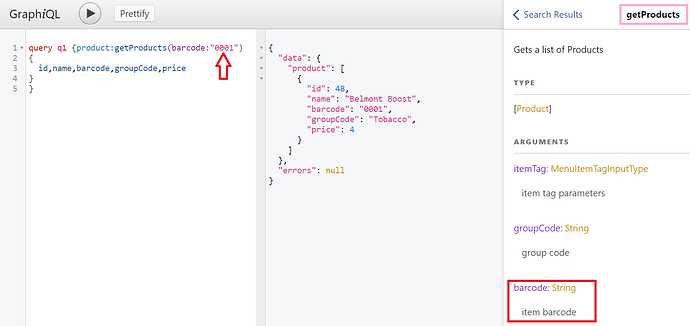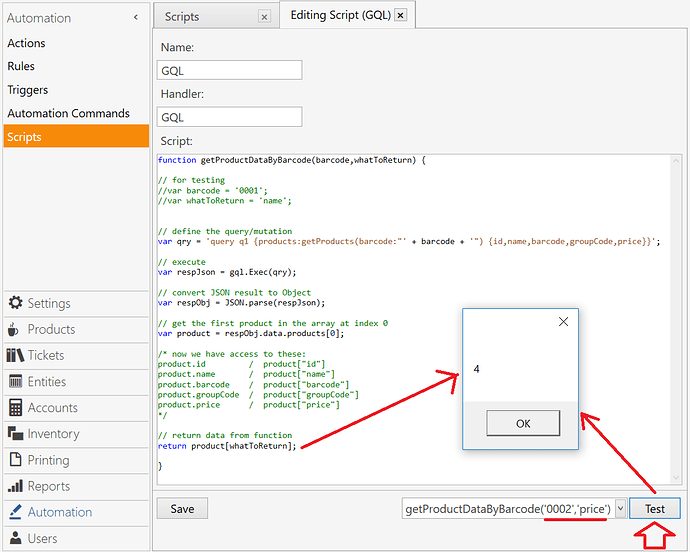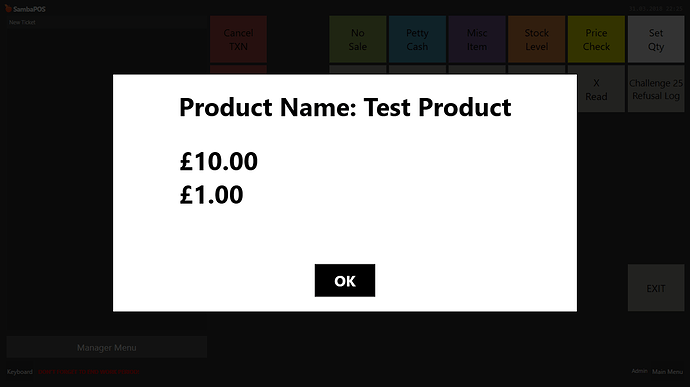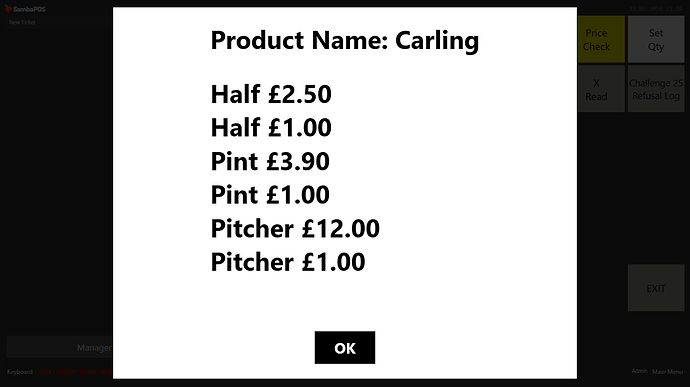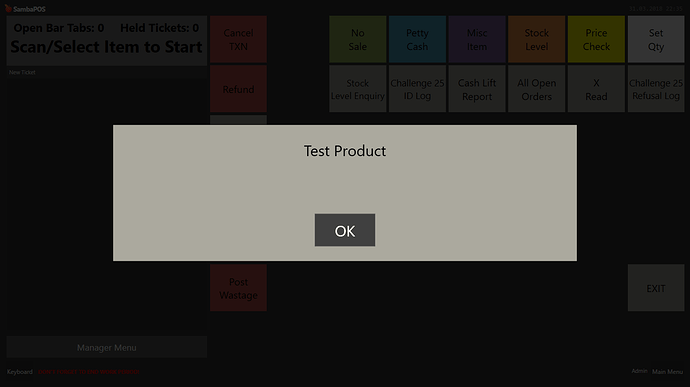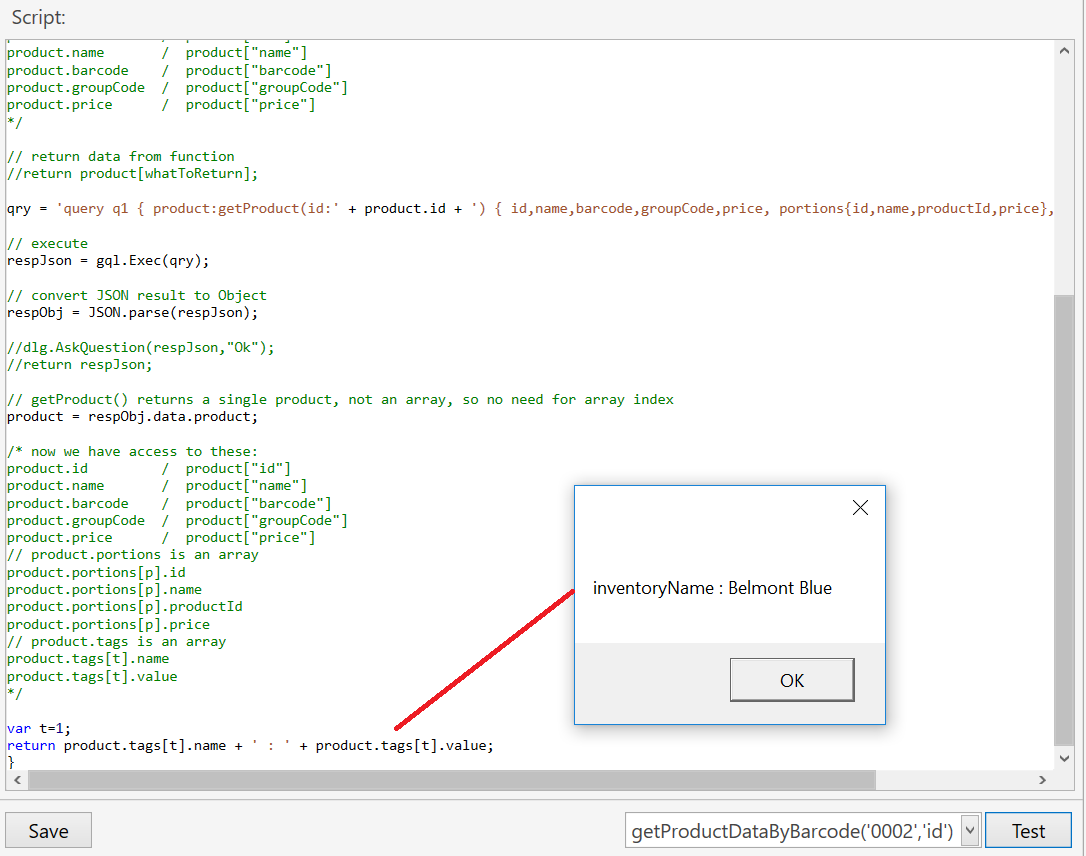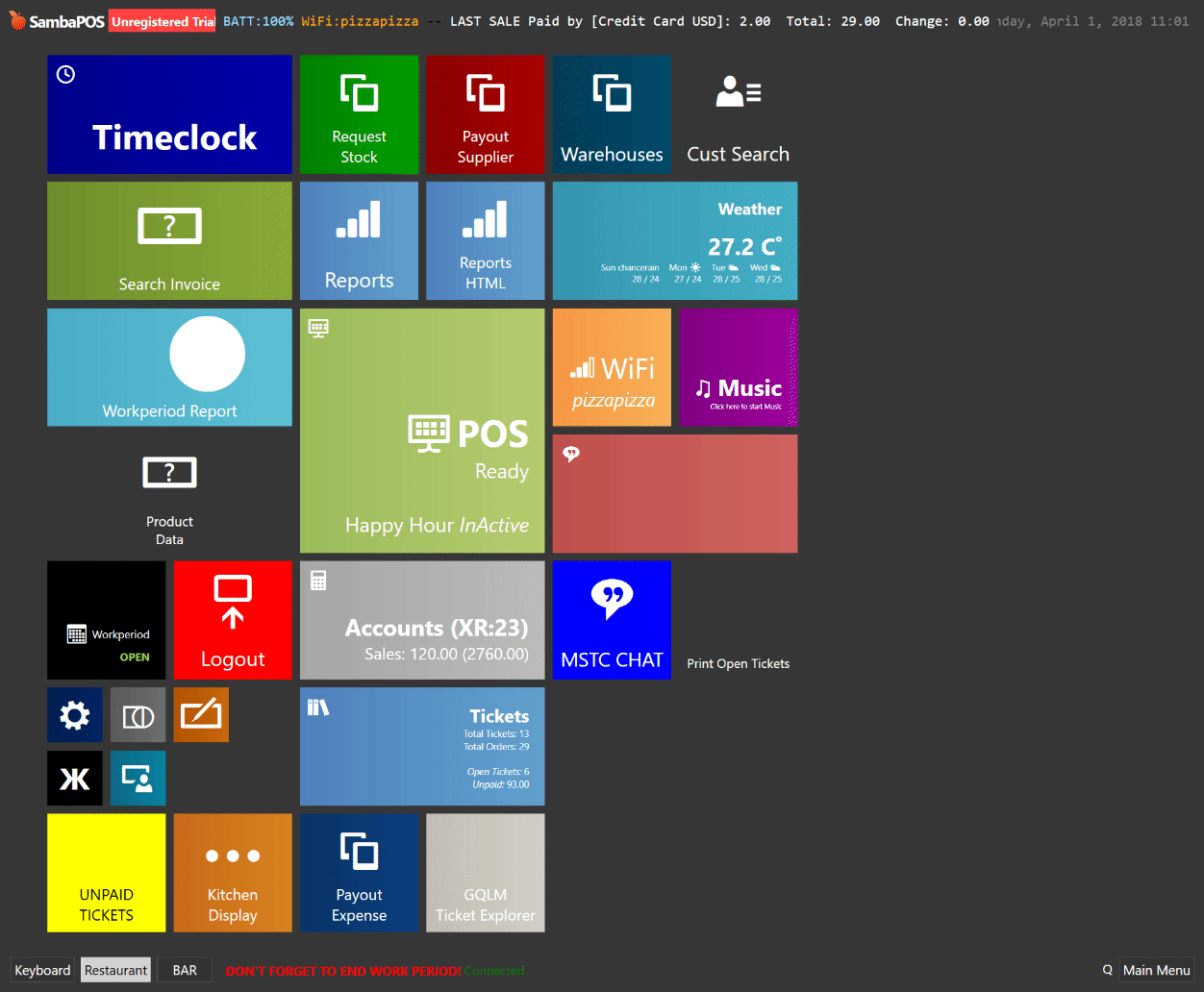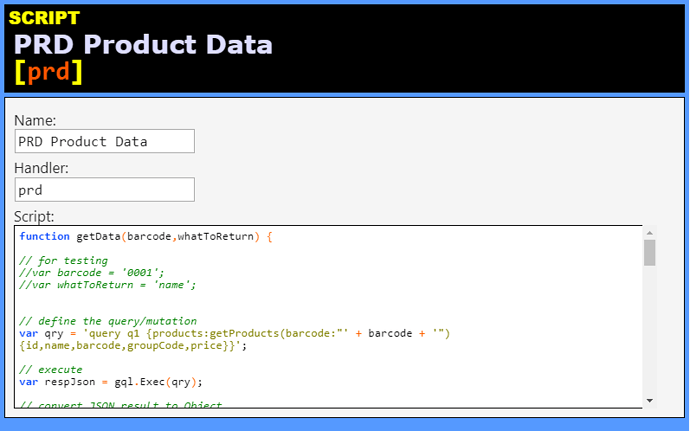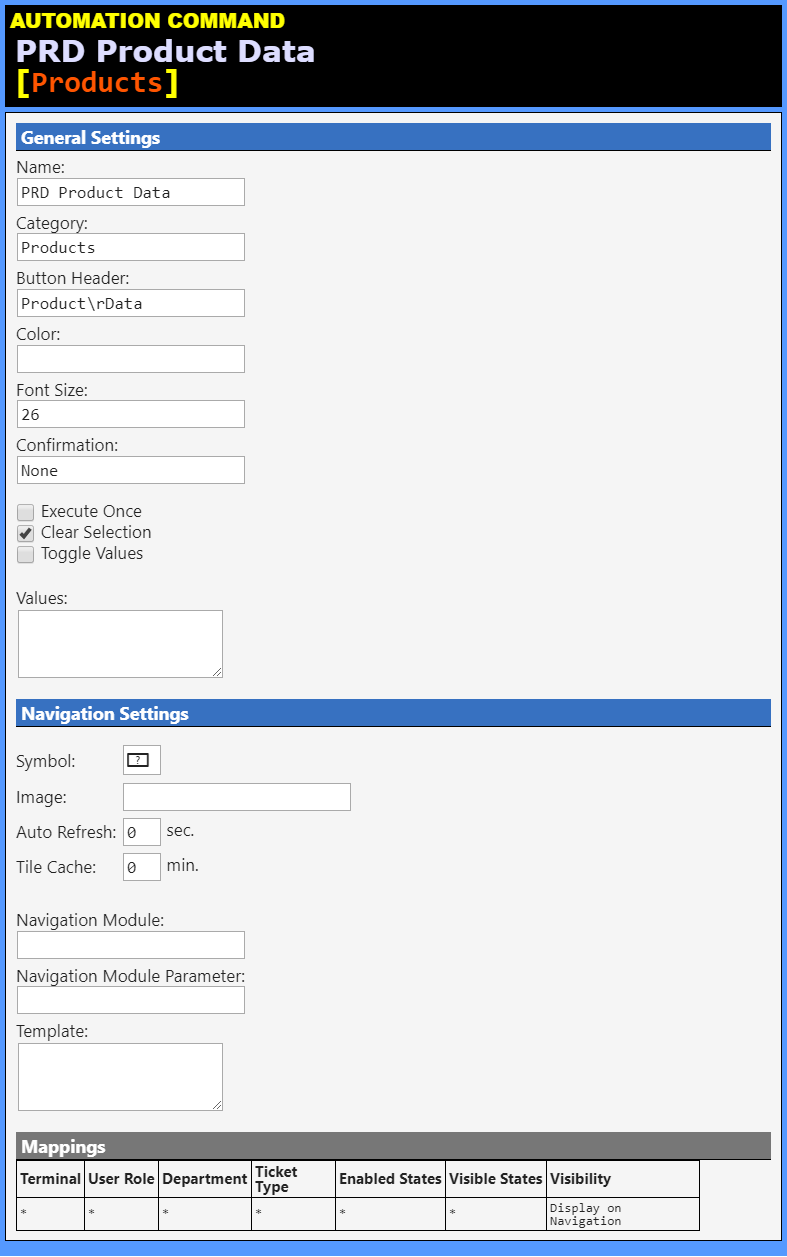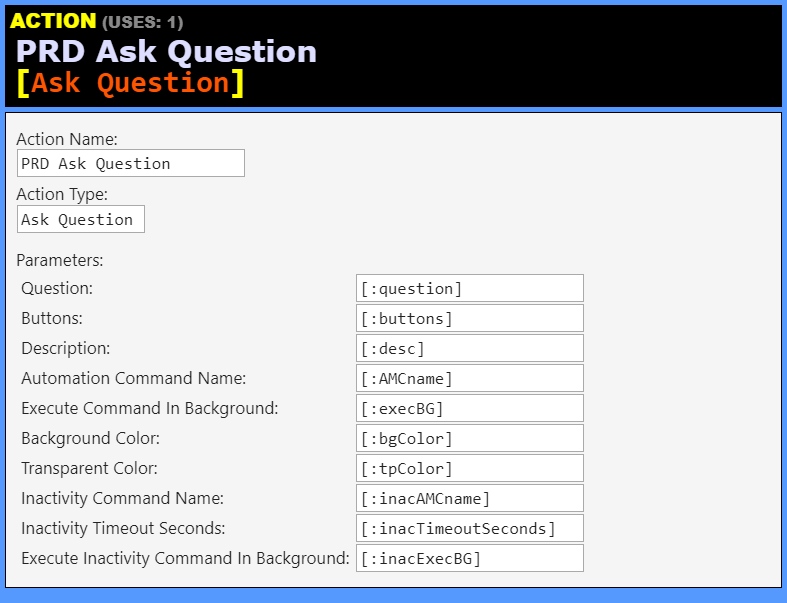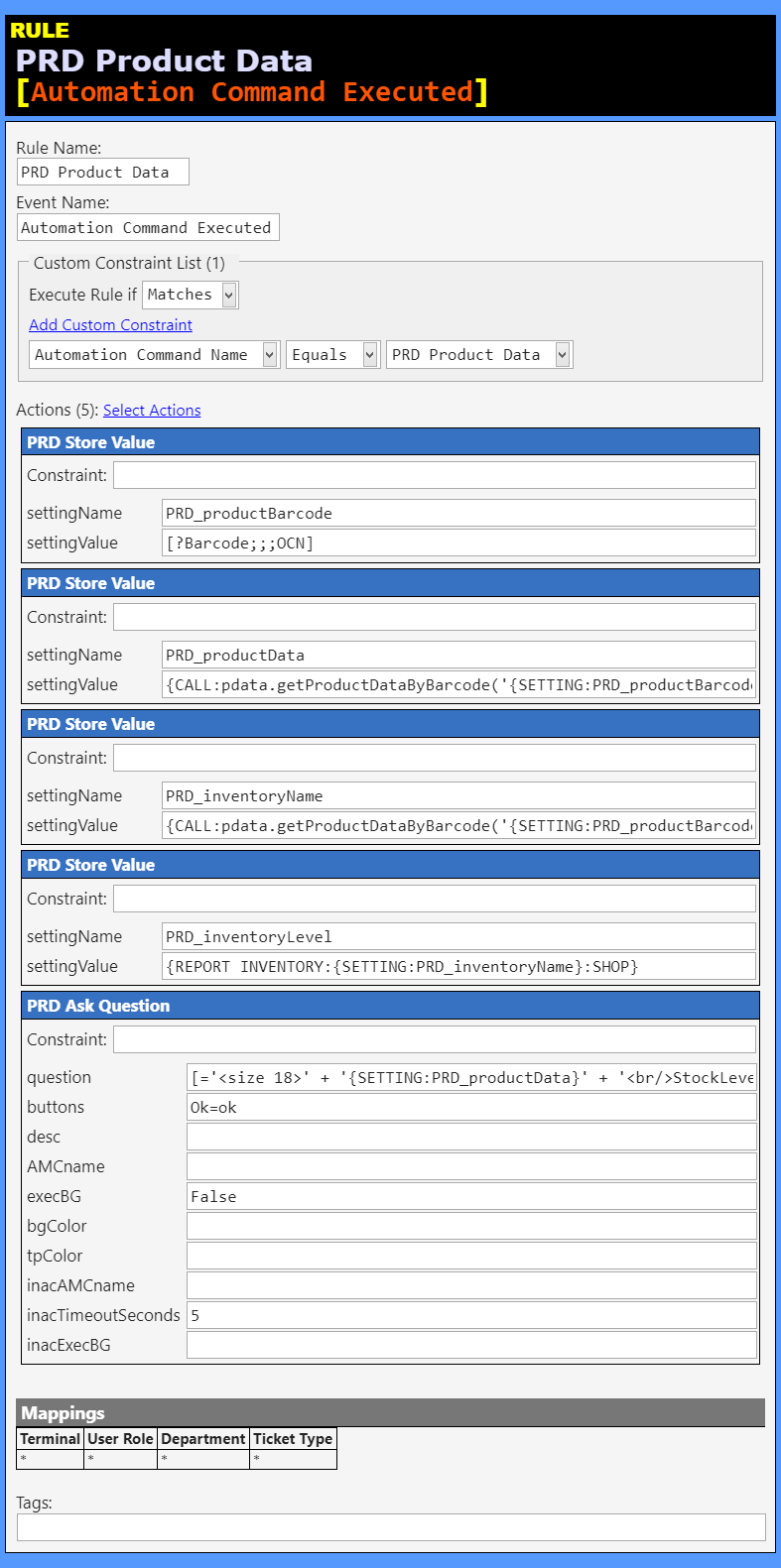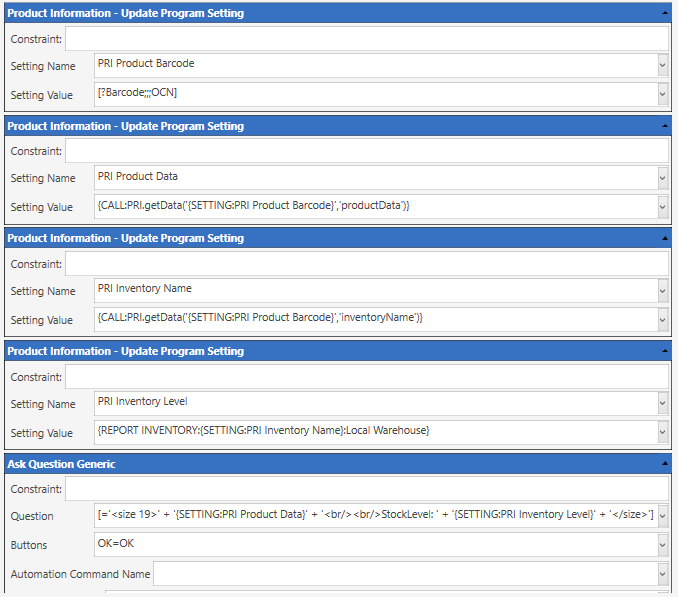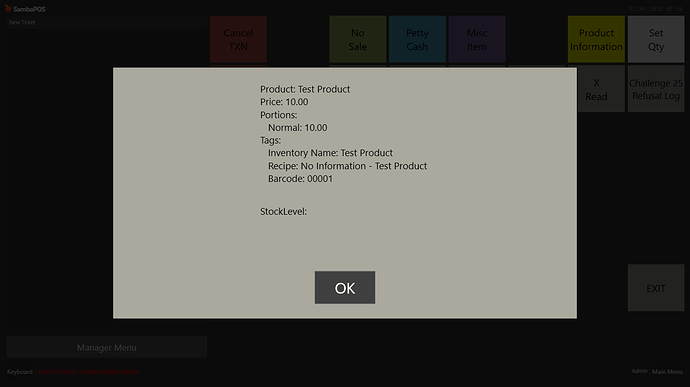So i have a setup where you add an order to the ticket, select it and press my Stock Level auto command button and it will show you the stock level in an ask question box. It uses the following in the ask question to display the stock level:
<color black><bold><size 40>{NAME} Stock Level: {REPORT INVENTORY:{ITEM TAG:Inventory Name}:Local Warehouse}</size></bold></color>
This outputs as:
What im trying to do now is get the ask question to display the stock level without adding an item to the ticket and by just scanning a barcode instead.
I have setup a program setting so that when a barcode is scanned it saves that barcode as a program setting.
I have an item tag setup on each product for barcode as below
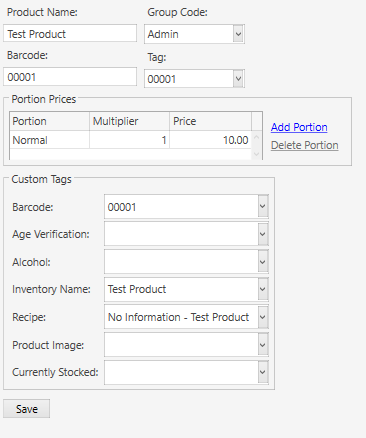
So what i need to do is link the ITEM TAG:Barcode with the program setting barcode saved in the first step, into the below so it displays the quantity in an ask question
<color black><bold><size 40>{NAME} Stock Level: {REPORT INVENTORY:{ITEM TAG:Inventory Name}:Local Warehouse}</size></bold></color>
I know this isnt correct but something along the lines of the following
<color black><bold><size 40>{NAME} Stock Level: {REPORT INVENTORY:{ITEM TAG:Barcode = {SETTING:Stock Level Barcocde}:Local Warehouse}</size></bold></color>
This is the bit i need to sort if its possible?
{ITEM TAG:Barcode = {SETTING:Stock Level Barcocde}

